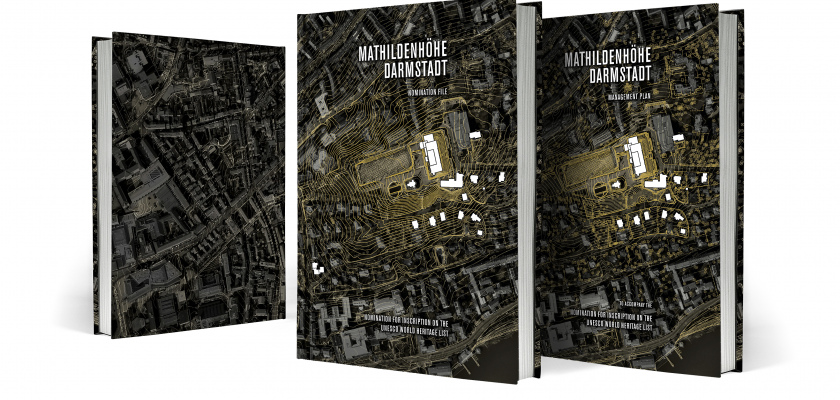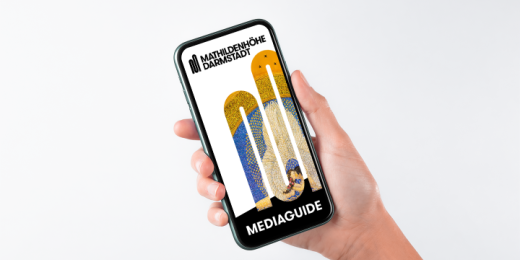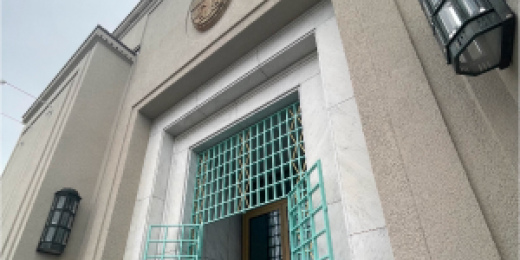Protecting and Preserving Something Unique
The UNESCO World Heritage Convention
The "Convention concerning the Protection of the World Cultural and Natural Heritage" (World Heritage Convention) was adopted by the General Conference of UNESCO in 1972. The idea behind this Convention is "... that parts of the cultural or natural heritage are of outstanding interest and therefore need to be preserved as part of the world heritage as a whole". It is the most important tool ever adopted by the international community to protect its cultural and natural heritage. To date, 193 states have ratified the Convention, including Germany in 1976.
World Natural Heritage is defined as unique natural phenomena, and World Cultural Heritage as unique human cultural achievements. These unique sites are listed in the World Heritage List of UNESCO. This list currently includes 1,092 sites from 167 countries. The spectrum ranges from natural landscapes and geological formations to cultural landscapes and cultural assets. Of these World Heritage Sites, 44 are in Germany (as of October 2018). The prerequisites for their inscription on the World Heritage List are above all their outstanding universal value, their integrity and the guarantee of their protection. Those who have made it onto the World Heritage List thus receive a kind of seal of approval of the World Heritage Convention.
On several occasions, UNESCO has defined the concept of "outstanding universal value" more precisely by formulating ten criteria since 1976, one or more of which a World Heritage site must meet. In addition, a site must be "intact" and "authentic" so that its original substance, history and exemplary nature are and remain recognisable. When States Parties apply for the inscription of World Heritage sites within their borders, they recognise the global significance of these sites and commit themselves to their preservation.
The decision to inscribe a site on the World Heritage List is taken by the World Heritage Committee. However, before this can happen, the relevant State Party must submit a proposal for inclusion on the so-called Tentative List. Being on the Tentative List is therefore mandatory in order to be able to prepare an application for the UNESCO World Heritage List.
In Germany, the Kultusministerkonferenz (Standing Conference of Ministers of Education and Cultural Affairs) decides on the composition of the Tentative List. The most recent List was adopted on 12 June 2014; since 2016, the annual nominations from the federal states have been successively processed. Hesse had applied with the Mathildenhöhe in Darmstadt, with the university town of Marburg, and with the spa town of Wiesbaden. The "Mathildenhöhe Darmstadt" was included in the new Tentative List and a decision on its inclusion in the World Heritage List is planned for 2020.
Summer 2012
Submission of the application for registration in the German Tentative List
To the Conference of Ministers of Education and Cultural Affairs by Mayor Partsch.
1st citizens' information event
On the subject of world heritage: information on the World Heritage Convention and the inscription procedure as well as presentation of the expert report by Prof. Dr. Werner Oechslin.
2nd citizens' information event
On the subject of world heritage: The activities of the association Bürger für das Welt¬erbe Kassel e.V. will be presented.
3rd citizens' information event
On the subject of world heritage: The Hessian UNESCO world heritage sites “Upper Ger¬man-Raetian Limes” and “Lorsch Monastery” will be presented. Information will also be provided on traffic regulations to protect the mosaic pavement on the Mathildenhöhe.
2013
4th citizens' information event
On the master plan procedure 027 Mathildenhöhe South for the preservation and targeted further development of the building and area structure with special consideration of the objectives of monument preservation.
12.06.2014
Inclusion of the Mathildenhöhe artists' colony in the German Tentative List
The Conference of Culture Ministers decides to include the Mathildenhöhe artists' colony on the German Tentative List for nomination to the UNESCO World Heritage List in 2019.
Winter 2014/2015
Appointment of a scientific advisory board as part of the preparation of the application for inscription on the UNESCO World Heritage List, Advisory Board
to provide advisory support for the application, advice on Outstanding Universal Value (OUV), World Heritage compatibility and the discussion of individual measures, framework plans, expert reports and studies.
2015
Establishment of the coordination round (several times a year)
To balance the interests of necessary measures in the nomination area, consisting of representatives of the owners and institutions in the nomination area “Stakeholders”: State of Hesse (applicant), City of Darmstadt (owner) Private owners of the core zone (delegate) Users of public buildings (institutions) Organizations (BDA, DA Architektur¬sommer) Friends of Mathildenhöhe Representatives of civic interests.
Establishment of the World Heritage Working Group
To develop the technical content for the nomination dossier and management plan by employees of municipal offices and departments and the Hesse State Office for Monument Preservation.
5th public information event
Status and timetable, information on the committees: Municipal Council Commission, Advisory Board, World Heritage Working Group, Coordination Round.
2016
6th citizens' information event
As an open information evening on the occasion of the symposium on the Mathildenhöhe artists' colony.
7th Citizens' information event
On the mobility concept, tourism concept
2017
8th citizens' information event
On the master plan, park maintenance work
21.12.2018
From there, the documents were sent to the Federal Foreign Office in Berlin in January 2019, which then submitted the documents as Germany's official contribution to UNESCO in Paris in 2019. In order to become a World Heritage Site, certain criteria specified by UNESCO must be met. The potential World Heritage Site must have Outstanding Universal Value (OUV). It must also fill a gap in the series of sites already designated as World Heritage Sites. In the opinion of an international Advisory Board, the artists' colony on the Mathildenhöhe fully meets these criteria.
From spring 2019
Evaluation procedure
Start of the multi-stage procedure by ICOMOS International.
9th citizens' information event
On the way to world heritage: status quo and current developments
10th citizens' information event
Presentation of the expert reports on the plane tree grove with Mayor Jochen Partsch and City Councillor Barbara Akdeniz.
Fall/winter 2019
Final assessment by ICOMOS International
Inspection and assessment of the Mathildenhöhe artists' colony in Darmstadt.
Inscription of the Mathildenhöhe as a UNESCO World Heritage Site
July 24, 2021
The World Heritage Committee of the United Nations Cultural Organization decided on 24.7.2021 at its 44th session (in Fuzhou, China) to recognize the Mathildenhöhe Darmstadt as a World Heritage Site.
Application documents
In January 2019, the City of Science Darmstadt, in cooperation with the Hesse State Office for Monument Preservation, submitted the official application for the inclusion of the “Mathildenhöhe Darmstadt” nomination area in the World Heritage List to UNESCO in Paris via the Federal Foreign Office in Berlin. In summer 2019, a delegation examined the application on site.
The relevant documents include a nomination dossier describing the Mathildenhöhe with all its special features and components worthy of protection. The history and development of the site, as well as the authenticity and integrity of the overall ensemble, play a special role. The outstanding universal value was described in detail with regard to UNESCO criteria and placed in an international comparison. The nomination area was newly mapped and its boundaries recorded All buildings, outdoor areas and sculptures in this area are included in this catalog as heritage worthy of protection.
In addition to extensive photographic documentation, a management plan has been drawn up that describes in detail the sustainable measures that the City of Science Darmstadt plans to take in the long term to protect the appearance of the Mathildenhöhe and responsibly preserve it as a cultural heritage site for future generations. It examines all issues that have or could have an impact on the ensemble in the future. This includes a park maintenance plan, which describes how to deal with the plane tree grove and the outdoor facilities on the Mathildenhöhe, as well as a master plan for the structural development, which integrates a new visitor center on the east side. A tourism concept explains aspects of mediation and a mobility concept looks at the traffic-related development of the area.
The nomination dossier and the management plan are supplemented by a collection of essays containing all important documentation, expert opinions and studies relevant to the application.

Mathildenhöhe Municipal Council Commission
2013 Establishment of the commission by the magistrate. Meeting in public
Task:
Advice on the further development of Mathildenhöhe. Continuous and transparent monitoring of the application process on the way to the inclusion of Mathildenhöhe on the UNESCO World Heritage List.
The commission consists of:
7 members of the municipal council, 7 members of the city council, 6 experts delegated by Darmstadt institutions.
Staff position “Mathildenhöhe Development Project Management”
2013 Established by Lord Mayor Jochen Partsch in Department I
Task:
Preparation of all matters relating to the nomination of the “Mathildenhöhe Artists' Colony Darmstadt” as a UNESCO World Heritage Site. Management of the World Heritage Office and coordination of the Mathildenhöhe development.
Advisory Board/World Heritage Council
2014 Appointment of the Advisory Board consisting of 10 experts from German-speaking countries.
Task:
Advisory support for the application. Advice on the Outstanding Universal Value (OUV), World Heritage compatibility, discussion of individual measures (e.g. planning of the visitor center), framework planning (e.g. park maintenance work), expert reports and studies. World Heritage workshops have been held since 2015 (twice a year)
Coordination group
Since 2015, consisting of representatives of the owners and institutions in the nomination area (stakeholders)
Task:
Providing information about and reconciliation of interests for necessary measures in the nomination area.
This group includes representatives of the following groups:
State of Hesse (applicant), City of Darmstadt (owner), private owners in the core zone (delegate), users of public buildings (institutions), Mathildenhöhe Friends' Associations, representatives of local residents.
World Heritage Working Group
Since 2015, consisting of employees from municipal offices and departments as well as the State Office for Monument Preservation Hesse.
Tasks:
Developing the technical content for the nomination dossier and management plan. Measures for the preservation, maintenance and communication of the “Mathildenhöhe Darmstadt” World Heritage Site.
Further Information about UNESCO
Find out more about UNESCO's work here:




